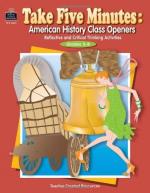|
This section contains 686 words (approx. 3 pages at 300 words per page) |

|
Alternatives to Cash. Even in the best of times little cash passed through most farmers' hands. When periodic financial crises hit, like the Panics of 1819 or 1837, circulating gold and silver currency disappeared almost completely, especially in rural areas. To make do, people resorted to other forms of currency, such as triangular pieces of coins called "shinplasters," printed paper money issued by businesses and termed "scrip," and Spanish gold dollars split into eighths, or "bits" (which gave rise to the slang phrases "two bit" and "pieces of eight"). Another alternative was the barter system, in which farmers, mill owners, blacksmiths, and storekeepers exchanged needed goods and services. Rebecca Burlend, an Englishwoman traveling in Illinois in the 1830s, noted that the countryside was filled with what "are termed store keepers, who supply the settlers with articles the most needed, such as food, clothing . . . medicine...
|
This section contains 686 words (approx. 3 pages at 300 words per page) |

|




